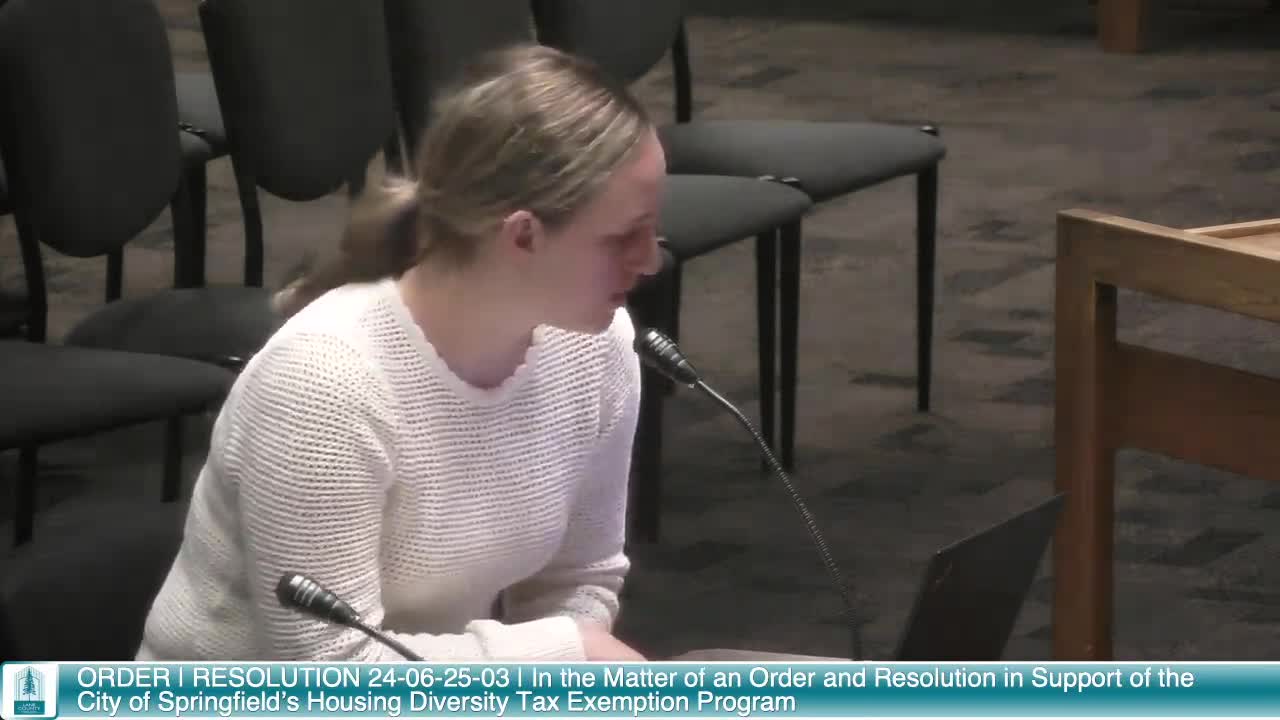Springfield tackles housing crisis with bold development plan
June 21, 2024 | Lane County, Oregon

This article was created by AI summarizing key points discussed. AI makes mistakes, so for full details and context, please refer to the video of the full meeting. Please report any errors so we can fix them. Report an error »

In a recent government meeting, officials discussed the pressing need for increased housing development in Springfield and Eugene, highlighting significant challenges and potential solutions. Commissioner Farr expressed concern over the lack of multiple unit developments in Springfield from 2008 to 2018, attributing this stagnation to insufficient rental prices that hindered denser housing projects. However, he noted a positive shift since 2018, with Eugene reporting eight new multiple unit projects initiated under the Multiple Unit Property Tax Exemption (MUPT) program.
Farr emphasized the long-term benefits of these developments, stating that properties would eventually contribute to tax rolls after a ten-year exemption period, contrasting this with the University of Oregon's projects, which may remain tax-exempt indefinitely. He pointed out that Lane County is currently falling behind in housing availability, with a deficit of 1,200 units annually, underscoring the urgency of addressing this issue.
Commissioner Seneca added to the discussion by referencing the healthy rental vacancy rate, which is commonly accepted at around 5%. He noted that the city is struggling to fill positions due to housing shortages, further complicating workforce housing issues. Other commissioners, including Commissioner Buck, expressed their support for the initiatives, acknowledging the importance of collaboration with other cities that have successfully implemented similar programs.
The meeting also touched on the interplay between urban renewal zones and tax exemptions for housing projects. Officials clarified that while urban renewal districts collect extra tax increments, the current housing challenges justify the investment in tax exemptions to stimulate development. The requirement for new projects to be at least four stories tall was highlighted as a strategy to encourage higher density in downtown areas.
Despite the overall support for the housing initiatives, one commissioner, who is also a developer, chose to abstain from voting due to potential conflicts of interest, emphasizing the need for transparency and caution in the decision-making process. The discussions reflect a growing recognition of the critical housing shortage in the region and the collaborative efforts needed to address it effectively.
Farr emphasized the long-term benefits of these developments, stating that properties would eventually contribute to tax rolls after a ten-year exemption period, contrasting this with the University of Oregon's projects, which may remain tax-exempt indefinitely. He pointed out that Lane County is currently falling behind in housing availability, with a deficit of 1,200 units annually, underscoring the urgency of addressing this issue.
Commissioner Seneca added to the discussion by referencing the healthy rental vacancy rate, which is commonly accepted at around 5%. He noted that the city is struggling to fill positions due to housing shortages, further complicating workforce housing issues. Other commissioners, including Commissioner Buck, expressed their support for the initiatives, acknowledging the importance of collaboration with other cities that have successfully implemented similar programs.
The meeting also touched on the interplay between urban renewal zones and tax exemptions for housing projects. Officials clarified that while urban renewal districts collect extra tax increments, the current housing challenges justify the investment in tax exemptions to stimulate development. The requirement for new projects to be at least four stories tall was highlighted as a strategy to encourage higher density in downtown areas.
Despite the overall support for the housing initiatives, one commissioner, who is also a developer, chose to abstain from voting due to potential conflicts of interest, emphasizing the need for transparency and caution in the decision-making process. The discussions reflect a growing recognition of the critical housing shortage in the region and the collaborative efforts needed to address it effectively.
View full meeting
This article is based on a recent meeting—watch the full video and explore the complete transcript for deeper insights into the discussion.
View full meeting
